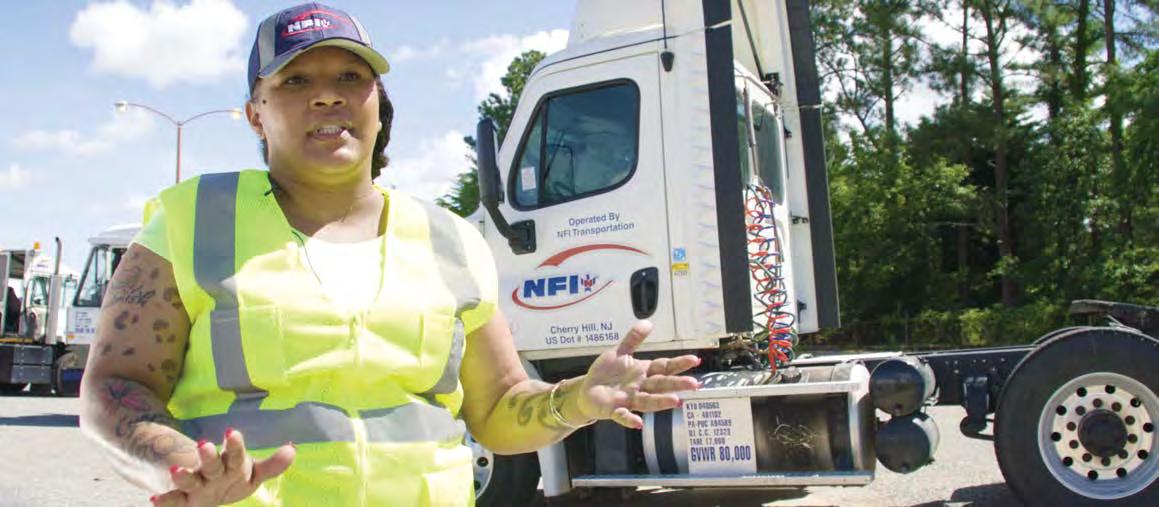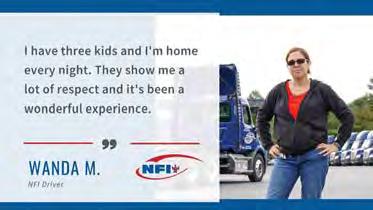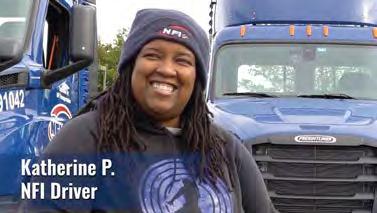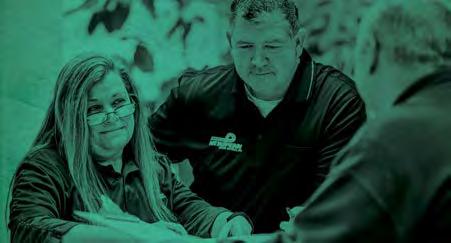
5 minute read
Case Study: Marketing to Women
Showcasing Women Improves Marketing
In June 2018, NFI Industries’ driver workforce was well below the national average of 10 percent women. The disparity set off alarm bells at the third-party logistics company.


Female drivers take center stage in NFI’s new marketing campaign.
After extensive conversations about the need to recruit more female drivers, NFI Senior Project Manager Alexa Branco and a team of recruiting and operations colleagues sprang into action to remedy the situation, she explained in a presentation at the 2019 Accelerate! Conference. Recognizing that the right marketing campaign could help to bolster recruiting efforts, they formulated a plan.
They began by interviewing female drivers from a local NFI fleet in Philadelphia. They spent the day on site, asking questions like, “What brought you to driving?” and “What would encourage other women to drive?”
The team also talked with NFI managers about the value that female drivers bring to the organization. The firsthand feedback from both groups was invaluable, Branco says.
The general consensus was that NFI should showcase its current female drivers to help raise awareness of the opportunity for women to drive trucks and show that the company is a great place to work.
“If you’re in the transportation industry, you know that women can drive, but if you’re outside the industry, you probably would have no idea that driving a truck could be a career choice for women,” Branco points out.
Giving Female Drivers a Voice
The research served as inspiration for NFI’s new ad campaign: “She Drives.” The premise is that women not only drive trucks, but also drive innovation and drive the company forward. Each static ad and video in the series features a female driver talking about why she drives or why she works at NFI. Launched in August 2018, it is the first campaign to feature female drivers in the history of the company which was founded in 1932.
A new ad is released every month on social media in strategic local markets. Family, flexibility and freedom are common themes.
continued on page 28







continued from page 26
“Driving is more like freedom,” explains Norisdelys M., who started as an NFI driver straight out of school. “I can come back home every day. That’s what I like the most. I can come back to my family. I have two kids. They get a lot of pride saying, ‘My mom is a truck driver.’ That makes me happy.”
“Every day when I get in the truck, I’m like, ‘Ok, what am I going to see today?’ That keeps me going actually. That keeps me motivated. Just the freedom,” explains Tia W., who prefers truck driving to her previous office job.
Achieving Impressive Results
“The feedback has been incredible,” Branco says. “We have seen a 350 percent increase in ad engagement with numerous ‘likes,’ ‘shares’ and comments. And we’ve had 33 times more viewers watch the entire video.”
The campaign is still underway with more videos yet to be released. Measuring the success of the program is somewhat challenging since job applications do not specify gender. However, NFI has seen a 36 percent increase in female drivers since launching the “She Drives” campaign. Branco is confident that the campaign has played a major role in that growth.
In conjunction with the ad campaign, NFI has worked to improve onboarding practices to help drivers feel safe and supported. The company also has intensified its focus on driver retention. “We’re talking to drivers, getting feedback and letting them know they’re heard,” Branco explains.
The “She Drives” campaign has strong management support, Branco emphasizes. “Our leadership team loves being part of this,” she says. “They recognize the need for a more inclusive and diverse workforce and see that the campaign is helping. They’re encouraging us to run with it and keep finding ways to improve.” n
NFI has seen a 36 percent increase in female drivers since launching the “She Drives” campaign. 5 Tips for Marketing to Women
Planning a marketing campaign of your own? Connect more effectively with a female audience by utilizing these strategies:
1 2 3 4 5
Don’t use the same messaging that you use for men. Women are more likely to be driven by empathy, a desire to be appreciated, the opportunity to be helpful, etc. They value information and love a good story. They also tend to be more motivated by messages of social responsibility.
Help women to recognize themselves in your materials. Simply showing women in your advertising is a good place to start. However, women come from many different walks of life and have different experiences and interests. Respect their diversity. And keep in mind that not every woman loves pink!
Address their hot buttons. When recruiting, for example, consider the aspects of driving that appeal most to women as well as areas of concern. An independent lifestyle, the potential for travel and pay/ benefits are big draws for female drivers, according to WIT research. Safety, schedule and equipment are common concerns.
Take your message online. Social media can be a powerful tool when marketing to women. For example, 74 percent of women use Facebook, according to a 2018 Pew Research Study. Instagram and Twitter are also popular, particularly with a younger audience.
Include women on your marketing teams. They can help to provide a female perspective. And, as with any area of a company, gender balanced teams are more effective and deliver better results.










